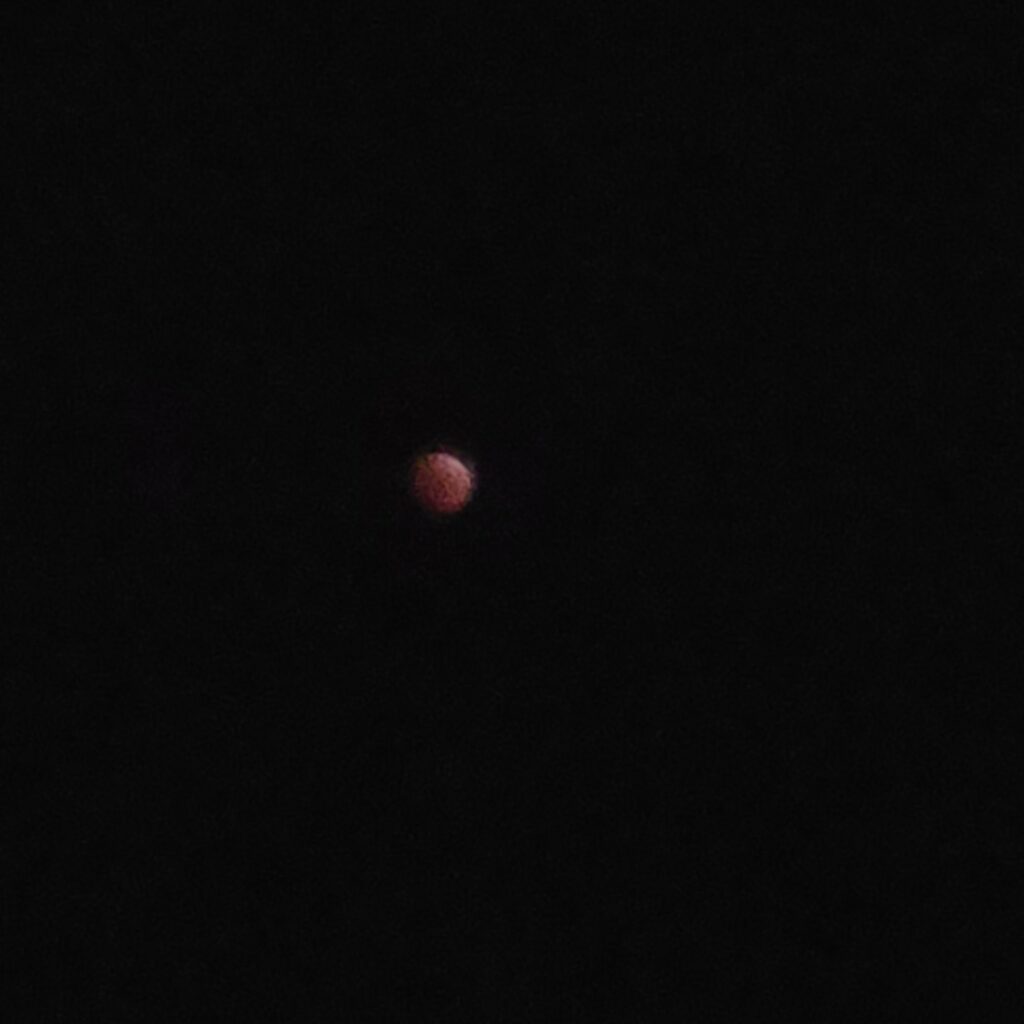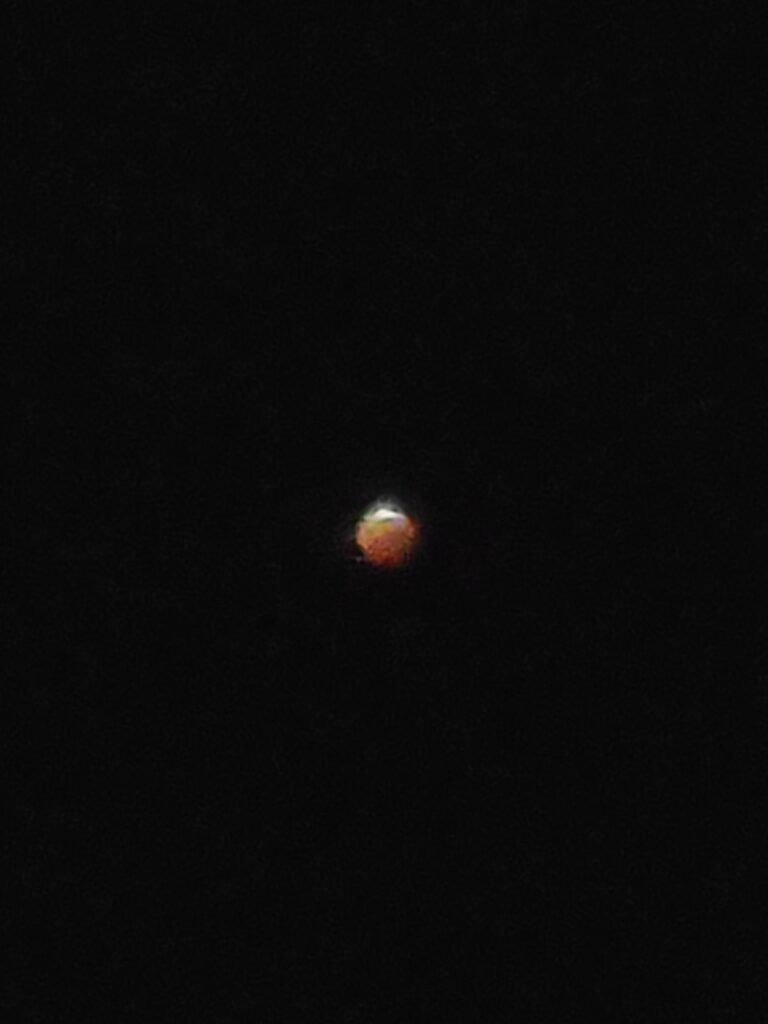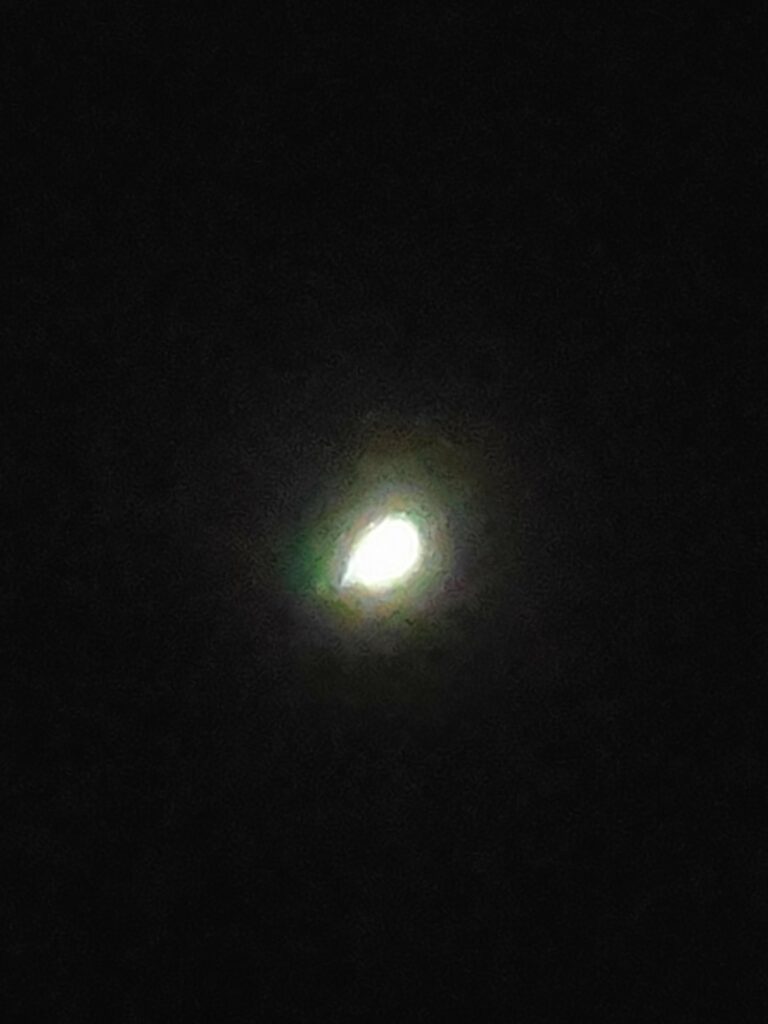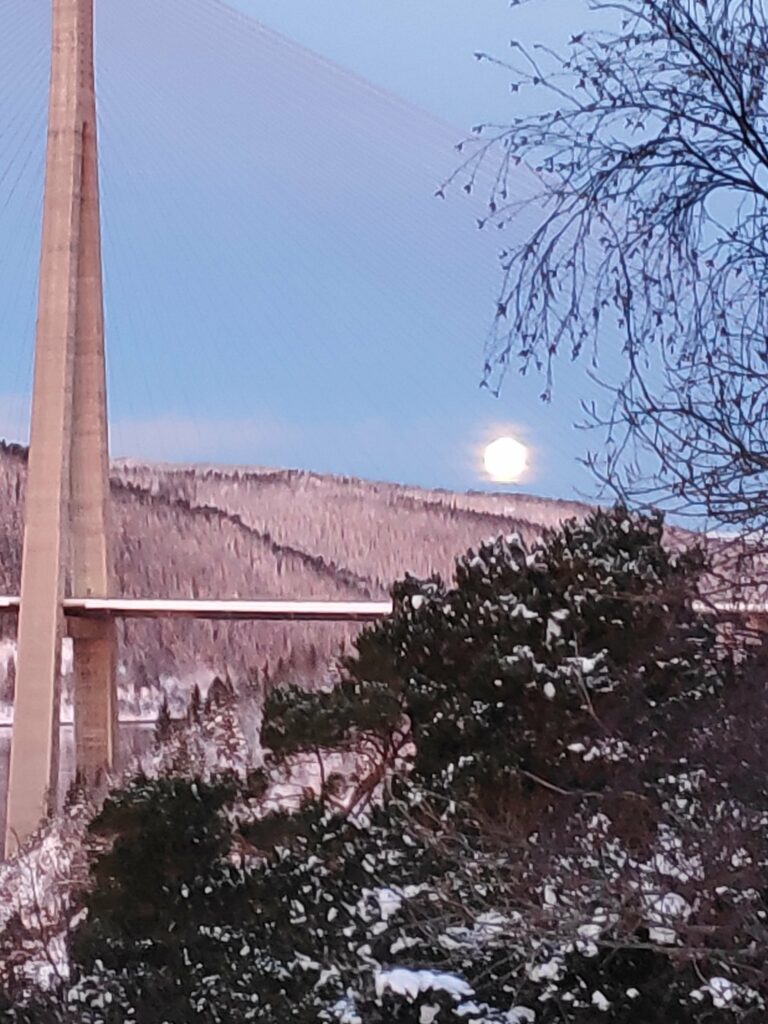Just as there is a sunrise and a sunset every day of the year (unless you live in polar regions), there will also be a moonrise and a moonset most days. The moon is different than the sun in that it doesn’t produce its own light as the sun does, but rather reflects the sun’s light. Half of the moon is illuminated at anytime, but how we see the moon is affected by its position in relationship to the sun and the earth.

The moon has eight different phases, based on how much illumination we get from it. A new moon is almost completely without reflected light and will look dark. It is then waxing, or increasing in light and becomes a crescent moon. Then comes the first quarter when half of the moon is illuminated. Then the moon is waxing gibbous. Then comes the full moon when the moon is a big round lighted circle in the sky as in the picture above. Then the moon is waning, or becoming smaller. Then comes the third quarter where again half of the moon is illuminated. The final phase is the waning crescent.

So, for example, where I live, the moonset was at 11:59 today (2021.01.06) and it will rise again tomorrow at 01:36, (https://www.timeanddate.com/moon/@3132743) and there will be 52% illumination. It is in the phase of the third quarter.
Let’s look at how the sun, the moon and the earth are aligned at four of these different phases.
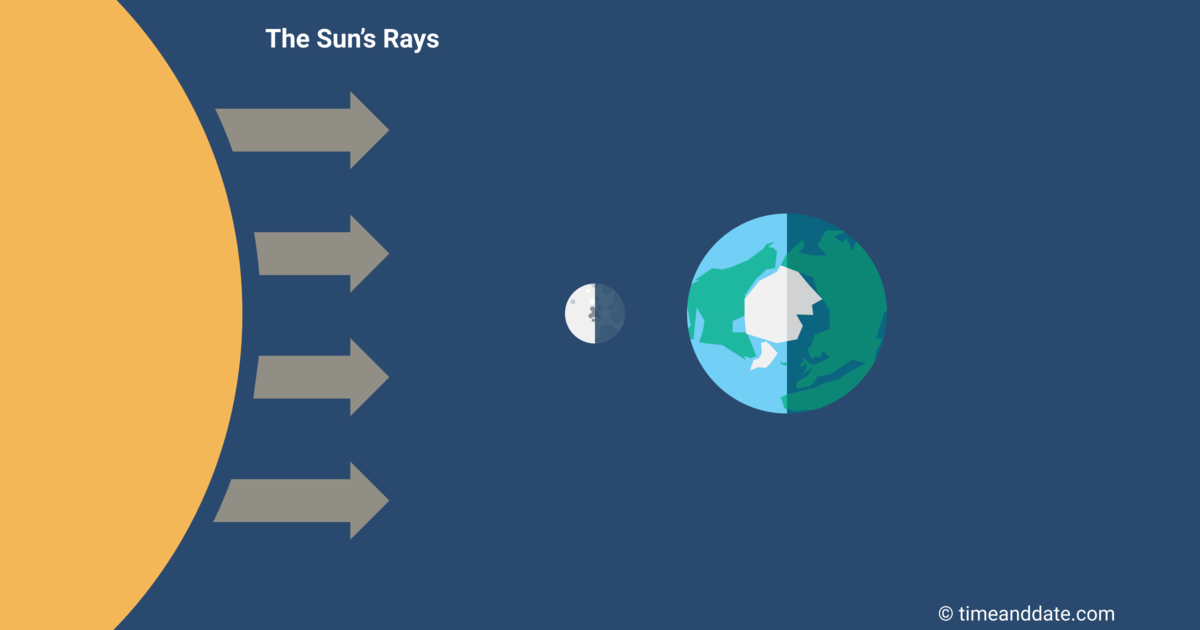
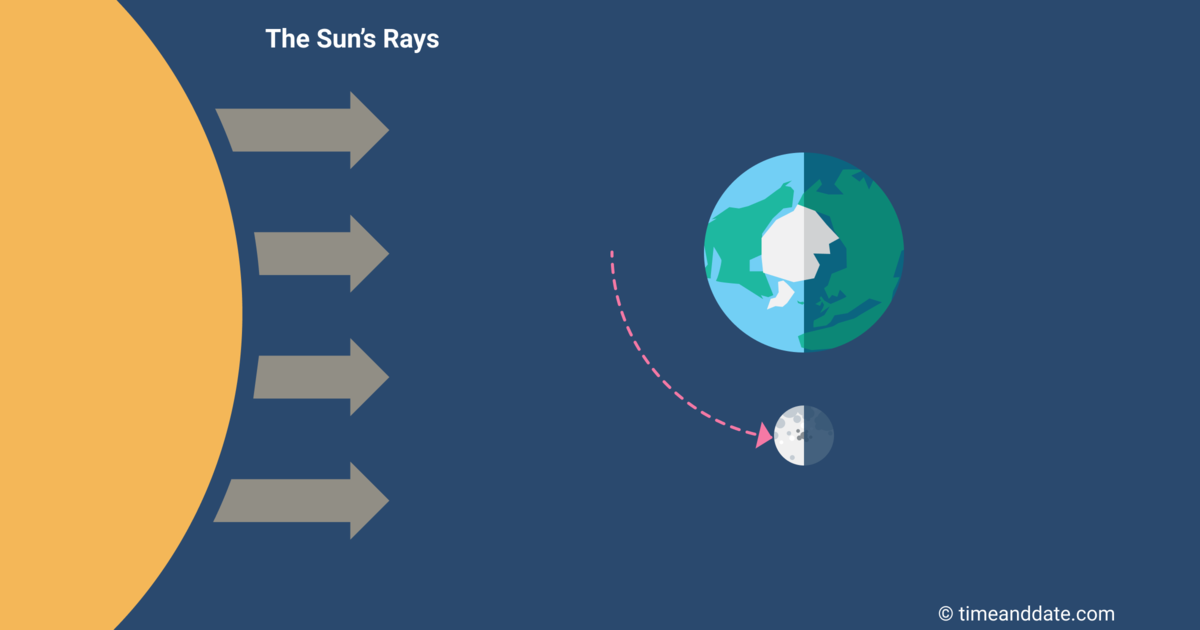


In the past, before electrical lighting was common, and today in places with little outdoor lighting, knowing the phases of the moon and when there would be extra light during the dark hours was important. Many people in cities today may find that they rarely see the moon, but I live in an area which is relatively dark at night, so I very much notice the full moon and how much light it gives.
Where the moon rises on a location’s horizon and where it sets varies throughout the lunar month. One thing I notice about where I live is that when the moon is full, it is usually shining into my bedroom and living room windows most of the night and setting after I get up in the morning. However, as we have only twilight instead of darkness during the months of May, June and July, I rarely notice the moon nearly so much during these months.
One of the reasons I was looking up this information about the moon and its phases was because I know it affects the tides. I will come back to this in a later blog.
The moon’s orbit around the earth is elliptical, meaning that it is not the same distance from the earth at all times. When the moon is closer to the earth, we get a supermoon, where the full moon looks bigger. When the moon is farther away from the earth, we get a micromoon, where the full moon looks smaller.
Other phenomena involving the moon are solar eclipses and lunar eclipses. These will only be visible from certain parts of the earth.
A solar eclipse happens when the new moon is between the earth and the sun and hides part of the sun. It may be partial, when the moon only covers part of the sun; it may be annular, when the moon is not large enough to cover all of the sun; it may be total, when the moon covers all of the sun. (See more information here)
A lunar eclipse happens when the earth gets between the sun and the moon and the earth’s shadow covers the moon. This will happen at the time of the full moon. The moon can turn red causing it to be called the Blood Moon.
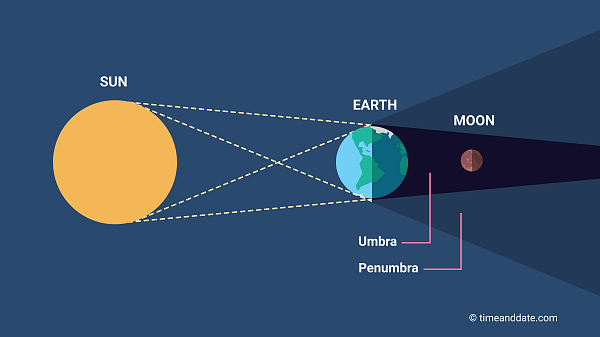
During a total lunar eclipse, no sunlight reaches the surface of the moon directly. However, sunlight is being bent by the earth’s atmosphere. (For more information click here). The moon looks red because only the longer wavelengths, like orange and red, pass through the atmosphere and end up on the moon.
On 2019.01.21, about two years ago, we had a total lunar eclipse that was visible from our house. Here are some pictures that I took myself.
